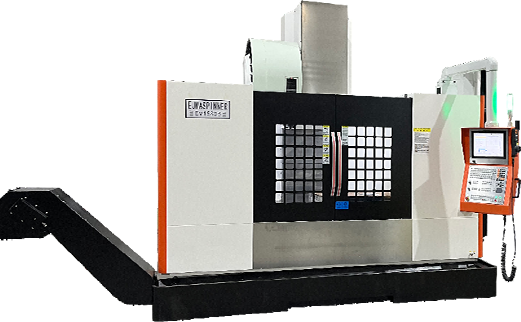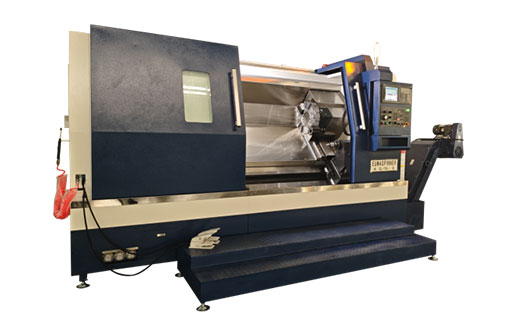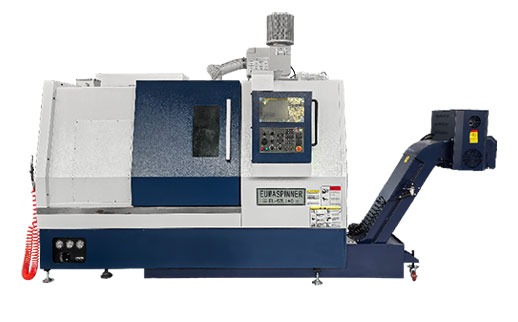In the modern manufacturing landscape, small and medium enterprises (SMEs) are constantly seeking ways to enhance their production efficiency and product quality. One crucial decision they often face is choosing the right CNC machining center. A suitable CNC machining center can significantly boost productivity, reduce costs, and improve the competitiveness of SMEs in the market. Here are some key aspects for SMEs to consider when making this important choice.

3/4 Axis Vertical Machining Center
The first step is to have a clear understanding of the parts to be processed. SMEs need to consider the type of parts, such as whether they are simple or complex in shape, and the materials they are made of. For instance, if a company mainly manufactures small, intricate metal parts, a machining center with high precision and the ability to handle various metal materials would be essential. Different materials like aluminum, steel, or titanium require different machining parameters, so the machine should be able to adapt accordingly.
Production volume also plays a vital role. For SMEs with small - batch production, a more flexible and cost - effective machining center might be sufficient. However, if there are plans for future expansion in production scale, it is advisable to choose a machine with some scalability in terms of speed, capacity, and automation features.
Spindle Performance
The spindle is the heart of a CNC machining center. SMEs should look at the spindle speed range. A high - speed spindle is beneficial for operations like milling soft materials or when high - speed cutting is required to achieve a better surface finish. For example, in the mold - making industry, where precision and smooth surfaces are crucial, a spindle with a maximum speed of 12,000 - 24,000 RPM might be more suitable. Additionally, spindle power is important, especially when dealing with hard materials or heavy - duty cutting tasks. A spindle with sufficient power can ensure stable machining without stalling.
Axis Movement and Precision
The accuracy of axis movement directly affects the quality of the machined parts. SMEs should pay attention to the positioning accuracy and repeatability of the machine. For parts with tight tolerances, a machining center with high - precision linear guides and ball screws is necessary. For example, in the aerospace or medical device industries, where parts often require micron - level accuracy, machines with positioning accuracy of ±0.005 mm or better are preferred. The speed of axis movement, or the rapid traverse rate, also impacts production efficiency. A faster rapid traverse rate allows the machine to move between different machining positions more quickly, reducing non - cutting time.
Tool Changer System
The tool changer system is another critical component. The capacity of the tool magazine should match the complexity of the machining tasks. If a job requires a large number of different tools, a machining center with a larger tool magazine capacity, say 24 or more tools, would be more appropriate. The tool change time is also a factor to consider. A shorter tool change time, such as 2 - 3 seconds, can significantly improve production efficiency, especially for jobs that involve frequent tool changes.
Initial Investment
SMEs usually have budget constraints, so the initial cost of the CNC machining center is an important consideration. However, it is not advisable to simply choose the cheapest option. Instead, look for a machine that offers a good balance between price and performance. Compare different brands and models in the market, and consider factors such as the machine's features, quality, and reputation. Sometimes, a slightly higher - priced machine with better performance and reliability can prove to be more cost - effective in the long run.
Operating and Maintenance Costs
In addition to the initial investment, operating and maintenance costs should not be overlooked. Energy consumption is one aspect. A more energy - efficient machining center can save on electricity bills over time. Maintenance costs include regular servicing, replacement of worn - out parts, and software upgrades. Choose a machine with easily accessible components for maintenance and a reliable supplier that can provide affordable replacement parts. Some machines may require specialized maintenance services, which can add to the overall cost, so it is important to factor this in when making a decision.
After - Sales Service and Technical Support
CNC machining centers are complex pieces of equipment, and issues may arise during operation. Therefore, reliable after - sales service and technical support are essential for SMEs. When choosing a machine, consider the reputation of the manufacturer or supplier in terms of customer service. A company that offers prompt response times to service requests, on - site repair services, and comprehensive training for operators and maintenance staff is more likely to be a good choice.
The availability of spare parts is also crucial. In case of a breakdown, quick access to replacement parts can minimize downtime. Some manufacturers have a wide network of service centers and warehouses, ensuring that spare parts can be delivered in a timely manner. Additionally, look for manufacturers that provide software updates and technical advice to help SMEs keep their machines up - to - date and running smoothly.
In conclusion, choosing a suitable CNC machining center for small and medium enterprises requires careful consideration of processing requirements, machine performance, cost - benefit ratio, and after - sales service. By taking the time to evaluate these factors, SMEs can make an informed decision that will contribute to the long - term success of their manufacturing operations.



GET A QUOTE